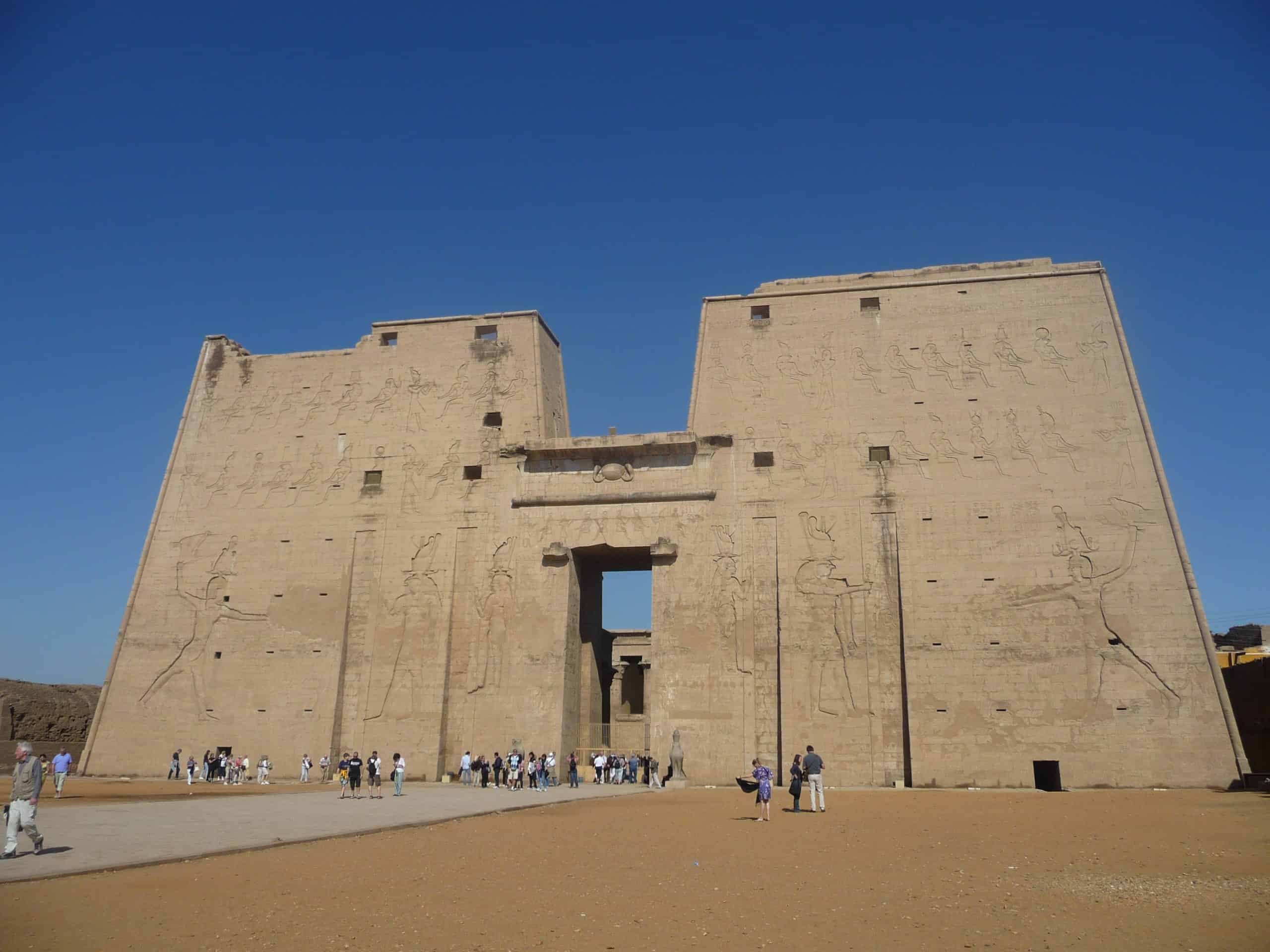
Built between 1350 and 180 BC under the mandate of Ramses II, the Temple of Kom Ombo stands on the banks of the Nile, near the town of the same name.
The deity to whom the temple is dedicated is Sobek, a crocodile-headed god with a human body, with an aggressive and ferocious temperament that was also invoked as a protective force against the dangers of the Nile. Subsequently, during the Middle Kingdom he began to be associated with the god of royalty, Horus, securing him a role of considerable importance in the Egyptian pantheon. Inside the Temple of Kom Ombo you can visit the chapel of Hator, female deity of beauty and love, in which there are some very well preserved crocodile mummies.
The Temple of Philae is of great importance to the Egyptians because, according to legend, when Osiris was murdered by his brother, who then scattered his limbs throughout the country, Isis, his beloved bride, collected them and took refuge on the island of Philae to recompose the body of the beloved.
On the island you can find numerous buildings of great value, such as the Temple of Hator or the Gate of Trajan, although the most amazing is the temple dedicated to Isis. Today the temple of Philae is no longer located on the Island of Philae: after the construction of the Aswan dam, in fact, it was submerged by the waters. Fortunately, after being disassembled, it was moved, brick by brick, to the nearby island of Agilkia, with great precision.
Dedicated to the god Horus, the Temple of Edfu is one of the largest in Egypt, second only to the Temple of Karnak and one of the best preserved.
The walls of the temple are rich in inscriptions that offer a wealth of information about the time when it was built. When non-Christian cults were banned in 391, the Temple of Edfu was attacked by Christians, who damaged much of its bas-reliefs, in an attempt to erase the religious images that were depicted there. Despite everything, it has been preserved in prefect state thanks to the fact that it remained buried under over 12 meters of desert sand for years.

















